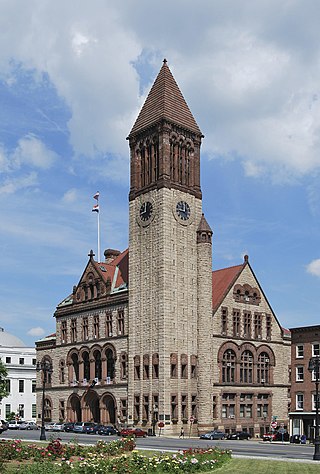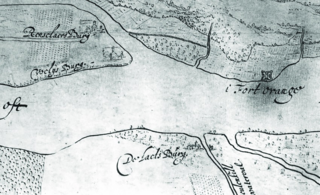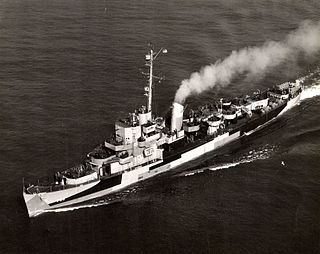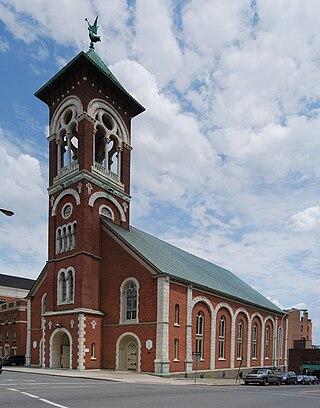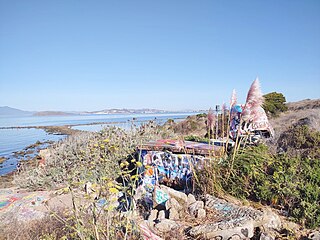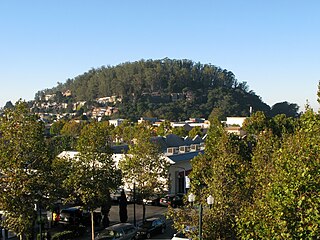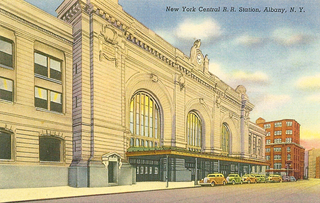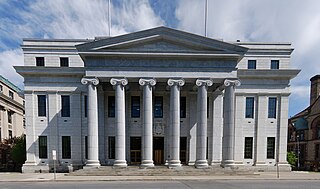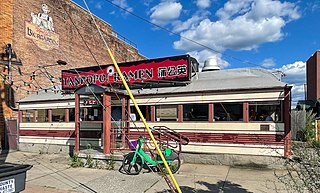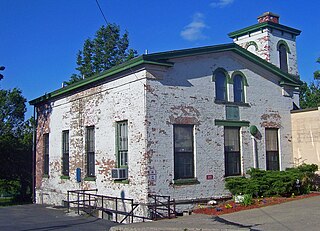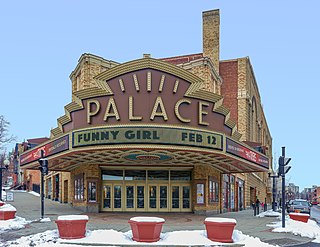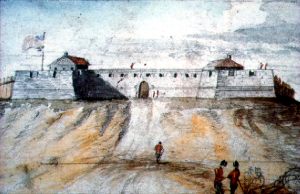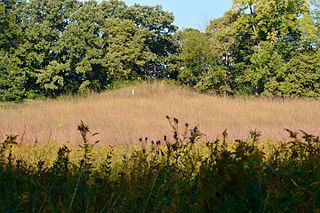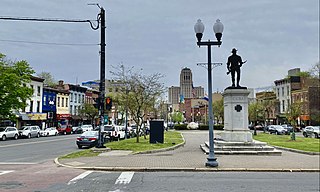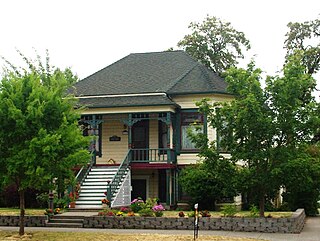34 Sights in Albany, United States (with Map and Images)
Legend
Welcome to your journey through the most beautiful sights in Albany, United States! Whether you want to discover the city's historical treasures or experience its modern highlights, you'll find everything your heart desires here. Be inspired by our selection and plan your unforgettable adventure in Albany. Dive into the diversity of this fascinating city and discover everything it has to offer.
Sightseeing Tours in Albany1. Albany City Hall
Albany City Hall is the seat of government of the city of Albany, New York, United States. It houses the office of the mayor, the Common Council chamber, the city and traffic courts, as well as other city services. The present building was designed by Henry Hobson Richardson in the Romanesque style and opened in 1883 at 24 Eagle Street, between Corning Place and Pine Street. It is a rectangular three-and-a-half-story building with a 202-foot-tall (62 m) tower at its southwest corner. The tower contains one of the few municipal carillons in the country, dedicated in 1927, with 49 bells.
2. Fort Orange
Fort Orange was the first permanent Dutch settlement in New Netherland; the present-day city and state capital Albany, New York developed near this site. It was built in 1624 as a replacement for Fort Nassau, which had been built on nearby Castle Island and served as a trading post until 1617 or 1618, when it was abandoned due to frequent flooding. Both forts were named in honor of the Dutch House of Orange-Nassau. Due to a dispute between the Director-General of New Netherland and the patroonship of Rensselaerswyck regarding jurisdiction over the fort and the surrounding community, the fort and community became an independent municipality, paving the way for the future city of Albany. After the English reconquered the region they soon abandoned Fort Orange in favor of a new fort: Fort Frederick, constructed in 1676.
3. Destroyer Escort Historical Museum
USS Slater (DE-766) is a Cannon-class destroyer escort that served in the United States Navy and later in the Hellenic (Greek) Navy. Following service during World War II, the ship was transferred to Greece and renamed Aetos. Decommissioned in 1991, the destroyer escort was returned to the United States.
4. Cathedral of the Immaculate Conception
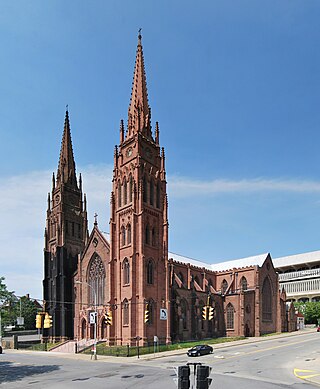
This image is protected by copyright! If you would like to use it, please read this first. / CC BY-SA 3.0
The Cathedral of the Immaculate Conception is a Catholic church near the Mansion District in Albany, New York, United States. Built in the period of the 1848-1852, it is the mother church of the Diocese of Albany. In 1976 it was listed on the National Register of Historic Places.
Wikipedia: Cathedral of the Immaculate Conception (Albany, New York) (EN), Website
5. St Mary's Roman Catholic Church
St. Mary's Church is a Roman Catholic house of worship on Lodge Street in downtown Albany, New York, United States. It is a brick structure with an Italian Romanesque Revival exterior. Built in the 1860s, it is the third church to house the oldest Catholic congregation not only in the city, but in all of upstate New York. In 1977, St. Mary's Church was listed on the National Register of Historic Places; it is also a contributing property to the Downtown Albany Historic District, listed several years later.
6. Albany Bulb
The Albany Bulb is a former landfill largely owned by the City of Albany, in California. The Bulb is the west end of a landfill peninsula jutting west from the east shore of San Francisco Bay. The term "Bulb" is often used to refer to the entire peninsula, which includes the Albany Plateau, north of Buchanan Street at its base; the high narrow "Neck," and the round "Bulb." The Bulb is part of the City of Albany, and can be reached via Buchanan Street or the Bay Trail along the east side of San Francisco Bay. Landmarks include, Mary's Mask, Gritchell's Bay, and Mad Marc's Castle. The Geotag for Gritchell's Bay is 37.8908083, -122.3257826.
7. Washington Park
Washington Park in Albany, New York is the city's premier park and the site of many festivals and gatherings. As public property it dates back to the city charter in 1686, and has seen many uses including that of gunpowder storage, square/parade grounds, and cemetery. The park is often mistaken as being designed by Frederick Law Olmsted, as it incorporates many of the philosophical ideals used by Olmsted when he designed Central Park in Manhattan. The park is about 81 acres (33 ha) in size with the 5.2-acre (2.1 ha) Washington Park Lake, a roughly 1,600-foot-long (490 m) and 140-foot-wide (43 m) lake, in the southwestern corner.
Wikipedia: Washington Park Historic District (Albany, New York) (EN)
8. H. Carl McCall SUNY Building
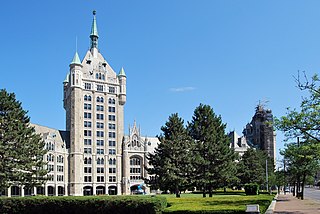
This image is protected by copyright! If you would like to use it, please read this first. / CC BY-SA 3.0
SUNY Plaza, or the H. Carl McCall SUNY Building, formerly the Delaware & Hudson Railroad Company Building, is a public office building located at 353 Broadway at the intersection with State Street in downtown Albany, New York, United States. Locally the building is sometimes referred to as "The Castle" or "D&H Plaza"; prior to the construction of the nearby Empire State Plaza it was simply "The Plaza". The central tower of the building is thirteen stories high and is capped by an 8-foot-tall (2.4 m) working weathervane that is a replica of Henry Hudson's Half Moon.
9. Washington Avenue Armory Sports and Convention Arena
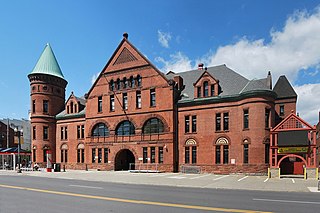
This image is protected by copyright! If you would like to use it, please read this first. / CC BY-SA 3.0
The Washington Avenue Armory, officially known as the Washington Avenue Armory Sports and Convention Arena and listed on the National Register of Historic Places as Washington Avenue Armory, is now a multi-purpose arena on the corner of Washington Avenue and Lark Street in downtown Albany, New York. The Armory has a capacity of 4,300 for concerts and conventions and 3,600 for sports events.
10. Fort Griffin State Historic Site
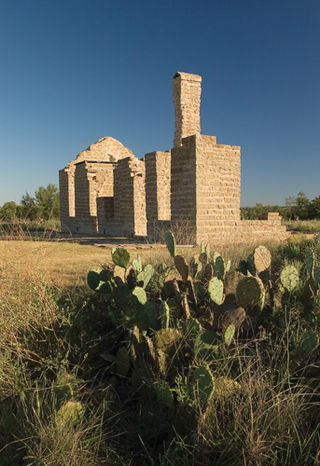
Fort Griffin, now a Texas state historic site as Fort Griffin State Historic Site, was a US Cavalry fort established 31 July 1867 by four companies of the Sixth Cavalry, U.S. Army under the command of Lt. Col. S. D. Sturgis, in the western part of North Texas, specifically northwestern Shackelford County, to give settlers protection from early Comanche and Kiowa raids. Originally called Camp Wilson after Henry Hamilton Wilson, a recently deceased lieutenant and son of Republican senator and later vice president, Henry Wilson, it was later named for Charles Griffin, a former Civil War Union general who had commanded, as de facto military governor, the Department of Texas during the early years of Reconstruction.
11. Albany Hill Park
Albany Hill is a prominent hill along the east shore of San Francisco Bay in the city of Albany, California. Geologically, the hill is predominantly Jurassic sandstone, carried to the western edge of North America on the Pacific Plate and scraped off there in the course of subduction. Albany Hill is part of a range of hills uplifted long before today's Berkeley Hills. These hills include Fleming Point and Point Isabel, Brooks Island, the Potrero San Pablo, and the hills across San Pablo Strait.
12. Albany Institute of History and Art
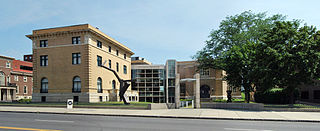
This image is protected by copyright! If you would like to use it, please read this first. / CC BY-SA 3.0
The Albany Institute of History & Art (AIHA) is a museum in Albany, New York, United States, "dedicated to collecting, preserving, interpreting and promoting interest in the history, art, and culture of Albany and the Upper Hudson Valley region". It is located on Washington Avenue in downtown Albany. Founded in 1791, it is among the oldest museums in the United States.
Wikipedia: Albany Institute of History & Art (EN), Website, Opening Hours
13. Schuyler Mansion State Historic Site
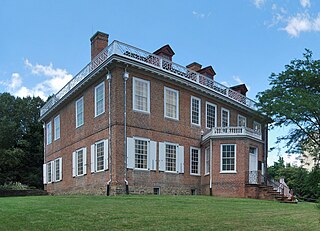
This image is protected by copyright! If you would like to use it, please read this first. / CC BY-SA 3.0
Schuyler Mansion is a historic house at 32 Catherine Street in Albany, New York. The brick mansion is now a museum and an official National Historic Landmark. It was constructed from 1761 to 1765 for Philip Schuyler, later a general in the Continental Army and early U.S. Senator, who resided there from 1763 until his death in 1804. It was declared a National Historic Landmark on December 24, 1967. It is also a contributing property to the South End–Groesbeckville Historic District, listed on the National Register of Historic Places in 1984.
14. The Peter Kiernan Building
Union Station, also known as Albany Union Station, is a building in Albany, New York, on the corner of Broadway and Steuben Street. Built during 1899–1900, it served originally as the city's railroad station but now houses credit union offices. It was listed on the National Register of Historic Places (NRHP) during 1971.
15. New York State Court of Appeals
The New York Court of Appeals Building, officially referred to as Court of Appeals Hall, is located at the corner of Eagle and Pine streets in central Albany, New York, United States. It is a stone Greek Revival building built in 1842 from a design by Henry Rector. In 1971 it was listed on the National Register of Historic Places, one of seven buildings housing a state's highest court currently so recognized. Seven years later it was included as a contributing property when the Lafayette Park Historic District was listed on the Register.
16. Lincoln Park

This image is protected by copyright! If you would like to use it, please read this first. / CC BY-SA 3.0
Lincoln Park is an urban park in Albany, New York, with a unique history, from being the site of a skirmish in 1626 between the Dutch and Mohawks to brickyards and breweries to being Albany's first public playground. The park features Albany's only outdoor non-wading swimming pool, along with several tennis courts, basketball courts, and football and baseball fields. Within the park is the James Hall Office, a National Historic Landmark, and the Thomas O'Brien Academy of Science and Technology (TOAST) an elementary school.
17. Tanpopo Ramen and Sake Bar
Tanpopo Ramen and Sake Bar is a historic diner in Albany, New York, built in 1941 and located at 893 Broadway, one of the oldest streets in Albany. Used as a set for the 1987 film Ironweed, which starred Jack Nicholson and Meryl Streep, it was added to the U.S. National Register of Historic Places in 2000.
18. James Hall House
The James Hall Office, formerly a part of the Sunshine School, is a historic building located in Lincoln Park in the city of Albany, New York, United States. It is a small brick Italianate building now annexed to a more modern school building. In 1976 it was designated a National Historic Landmark for its association with James Hall (1811–1898), a leading American geologist of the 19th century.
19. Palace Theatre
The Palace Theatre is an entertainment venue in downtown Albany, New York, located on the corner of Clinton Avenue and North Pearl Street. The theatre is operated by the Palace Performing Arts Center, Inc., a 501(c)(3) non-profit organization. Established in 1984 and incorporated as a not-for-profit corporation in 1989, the Palace Performing Arts Center, Inc. was created to operate the theatre and utilize its full potential as a cultural and entertainment center in Albany.
20. Harmanus Bleecker Library Building
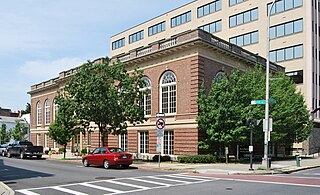
This image is protected by copyright! If you would like to use it, please read this first. / CC BY-SA 3.0
The former Harmanus Bleecker Library is located at the intersection of Washington Avenue and Dove Street in Albany, New York, United States. It is a brick and stone Classical Revival building constructed in the 1920s. In 1996 it was listed on the National Register of Historic Places.
21. Albany Pump Station
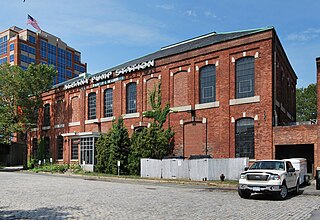
This image is protected by copyright! If you would like to use it, please read this first. / CC BY-SA 3.0
The Albany Pump Station, originally the Quackenbush Pumping Station of the Albany Water Works, is located in Quackenbush Square on Broadway in the city of Albany, New York, United States. It is a large brick building constructed in the 1870s and expanded later in the century.
22. Albany Municipal Airport Historic District
Albany Municipal Airport is a general aviation airport located 3 nautical miles (6 km) east of the city of Albany in Linn County, Oregon, United States. It is publicly owned and operated by the City of Albany. It is the oldest known operating airfield in Oregon, having opened in 1920.
23. Fort Frederick
Fort Frederick was a fort in Albany, New York from 1676–1789. Sitting atop State Street Hill it replaced the earlier decaying Fort Orange along the Hudson River. The fort was named for Frederick Louis, Prince of Wales, son of King George II. The fort was referred to as Fort Albany in the 1936 novel Drums Along the Mohawk. Several historical markers have been placed west of the location of the fort.
24. The University Club of Albany Building
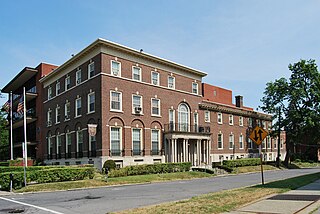
This image is protected by copyright! If you would like to use it, please read this first. / CC BY-SA 3.0
The University Club of Albany, New York, was a social club founded in 1901 that closed in 2022. It was most recently housed in a Colonial Revival brick building at the corner of Washington Avenue and Dove Street.
25. Young Men's Christian Association Building
The former Young Men's Christian Association Building in Albany, New York, United States, is located on Pearl Street. It was built in the 1880s in the Romanesque Revival architectural style, with an existing neighboring structure annexed to it and a rear addition built in the 1920s. It was listed on the National Register of Historic Places in 1978. Two years later, when the Downtown Albany Historic District was designated and listed on the Register, YMCA building was further included as a contributing property.
26. Walter Merchant House
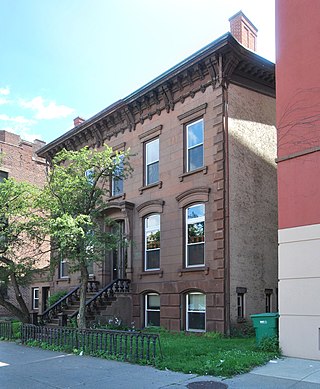
This image is protected by copyright! If you would like to use it, please read this first. / CC BY-SA 3.0
The Walter Merchant House, on Washington Avenue in Albany, New York, United States, is a brick-and-stone townhouse in the Italianate architectural style, with some Renaissance Revival elements. Built in the mid-19th century, it was listed on the National Register of Historic Places in 2002.
27. Church of the Holy Innocents

This image is protected by copyright! If you would like to use it, please read this first. / CC BY-SA 3.0
The former Church of the Holy Innocents, later known as Church of the Nativity of our Virgin Lady, was originally an Episcopal church located on North Pearl Street in Albany, New York, United States. It and an adjacent chapel were built in the mid-19th century in an early Gothic Revival style designed by Frank Wills. It was listed on the National Register of Historic Places in 1978.
Wikipedia: Church of the Holy Innocents (Albany, New York) (EN)
28. Tricentennial Park
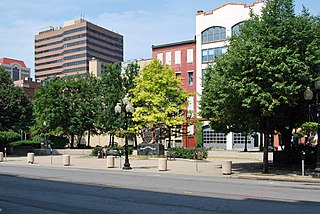
This image is protected by copyright! If you would like to use it, please read this first. / CC BY-SA 3.0
Tricentennial Park is an urban park in Albany, New York built to commemorate that city's three hundredth anniversary as an incorporated city and is the site of several statues and monuments. The park encompasses the entire block bounded by Broadway to the east, Columbia Street to the north, James Street to the west, and Steuben Street to the south. First proposed in 1914 it was built in 1986 as part of the tricentennial celebrations of Albany's incorporation as a city in association with the renovation of the Albany Union Station.
29. Albany Mounds Site
Albany Mounds State Historic Site, also known as Albany Mounds Site, is a historic site operated by the Illinois Historic Preservation Agency. It spans over 205 acres of land near the Mississippi River at the northwest edge of the state of Illinois in the United States. In 1974, the site was added to the National Register of Historic Places list. The historical site is under the provision of the Illinois Historic Preservation Agency, a governmental agency founded in 1985 for the maintaining of historical sites within the state. In the 1990s, the site underwent a restoration project that aimed to return its appearance to its original condition.
Wikipedia: Albany Mounds State Historic Site (EN), Website, Heritage Website
30. United Traction Company Building

This image is protected by copyright! If you would like to use it, please read this first. / CC BY-SA 3.0
The United Traction Company Building is located on Broadway in Albany, New York, United States. It is a brick building by local architect Marcus T. Reynolds in the Renaissance Revival architectural style, constructed at the end of the 19th century. In 1976 it was added to the National Register of Historic Places. Four years later it was included as a contributing property when the Downtown Albany Historic District was listed on the Register.
31. Townsend Park
Townsend Park is a small urban park in Albany, New York, New York State, United States. It encompasses a triangle of land formed by the Y-intersection of Central and Washington avenues, with the third (western) border formed by Henry Johnson Boulevard.
32. Monteith Historic District
The Albany Monteith Historic District, also known as Monteith Historic District, in Albany, Oregon, United States, was listed on the National Register of Historic Places (NRHP) in 1980. It includes the Alfred Dawson House, which is separately listed on the NRHP. The district was expanded in 2008.
33. Dana Park
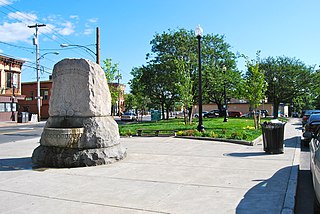
This image is protected by copyright! If you would like to use it, please read this first. / CC BY-SA 3.0
Dana Park is a small .2-acre (810 m2) urban park in Albany, New York and includes a memorial to James Dana which doubles as Albany's last remaining horse trough. It is located in the Y-intersection caused by Delaware Avenue to the east and Lark Street to the west, with the third leg of the triangle formed by Dana Avenue. Madison Avenue forms a five-point intersection with Lark Street and Delaware Avenue at the eastern end of the park. The park is important to several different neighborhoods, Hudson-Park, Park South, and Lark Street.
34. Hackleman Historic District
The Hackleman Historic District in Albany Oregon, was placed on the list of National Register of Historic Places (NRHP) in 1982. The district contains 228 historic properties within about a 28 city blocks area. The district was named after Abner Hackleman who came to Albany in 1845.
Share
How likely are you to recommend us?
Disclaimer Please be aware of your surroundings and do not enter private property. We are not liable for any damages that occur during the tours.
